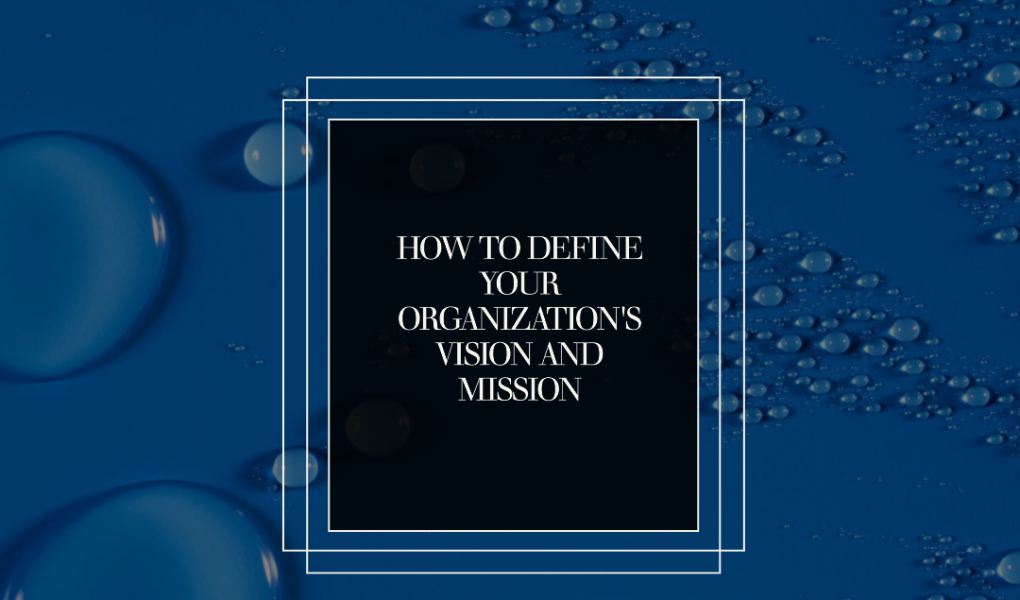You know, figuring out your organization’s vision and mission is like setting up the ultimate GPS for success. Think of a vision statement as the dream destination you want your organization to reach someday, while the mission statement is like the trusty route you’ll follow to get there. It’s all about what your organization stands for, who it’s here to help, and how it plans to make that dream a reality.
A rock-solid vision and mission don’t just make decisions easier, they also fire up your team and win over customers and stakeholders. Let’s explore more about this and set your organization up for success!
Table of Contents
Understanding the Importance of Vision and Mission Statements
Vision and mission statements are key elements of an organization’s strategic planning process. They provide a clear direction, purpose, and identity for the organization, which helps to align everyone’s efforts towards the same goals. When an organization’s vision and mission are clear and well-communicated, employees are more likely to feel motivated and engaged, and customers are more likely to feel confident in the organization’s ability to deliver on its promises. Read Difference Between Vision and Mission in Strategic Management.
The Role of Vision and Mission in an Organization
The vision and mission provide a framework for making decisions and setting priorities. They help to define the organization’s values, culture, and overall direction. By articulating the organization’s goals and objectives, a vision and mission statement can help to increase employee engagement, customer loyalty, and stakeholder buy-in.
For example, a company that has a clear mission statement of providing eco-friendly products will prioritize sustainability in all aspects of its operations, from sourcing materials to manufacturing processes to packaging and shipping. This will not only attract customers who are environmentally conscious but also create a sense of purpose and pride among employees who are contributing to a larger cause.
Similarly, a nonprofit organization that has a clear vision of eradicating poverty in a certain region will prioritize programs and initiatives that directly address poverty, such as education and job training, healthcare, and access to basic needs like food and shelter. This will not only attract donors and volunteers who share the organization’s vision but also create a sense of urgency and impact among employees who are working towards a tangible goal.
Benefits of Having Clear Vision and Mission Statements
Clarity of vision and mission has several benefits for organizations of all sizes and structures. One key benefit is that it provides a clear direction for the entire organization. Everyone knows what they are working towards, and what they need to do in order to achieve organizational goals.
Furthermore, a clear vision and mission statement can help to create a sense of unity and cohesion among employees. When everyone is working towards the same goals and values, it fosters a sense of teamwork and collaboration, which can lead to increased productivity and innovation.
Having a clear vision and mission statement can also help to attract and retain customers. When an organization’s values and goals align with those of its customers, it creates a sense of trust and loyalty. Customers are more likely to choose a company that they believe in and feel good about supporting, and they are more likely to recommend that company to others.
Finally, a clear vision and mission statement can help to differentiate an organization from its competitors and increase brand loyalty among customers. When an organization has a unique and compelling vision and mission, it sets itself apart from others in the industry and creates a sense of identity and purpose that customers can connect with.
In summary, having a clear vision and mission statement is essential for any organization that wants to succeed in today’s competitive and ever-changing business landscape. By providing a clear direction, purpose, and identity, a vision and mission statement can help to align everyone’s efforts towards the same goals, increase employee engagement and customer loyalty, and differentiate the organization from its competitors.
See also: 15 Traits of Being a Great Leader
Crafting a Compelling Vision Statement
A compelling vision statement is crucial for any organization as it serves as a guiding light that outlines its long-term aspirations. A well-crafted vision statement should be inspiring, memorable, and reflective of the organization’s values and culture. Here are some key elements to consider when crafting your organization’s vision statement:
Key Elements of an Effective Vision Statement
- Concise and clear: A vision statement should be easy to remember and communicate to others. It should be concise and straightforward, capturing the essence of your organization’s long-term aspirations in a few simple sentences.
- Future-oriented: A compelling vision statement should be forward-looking, offering a glimpse into what the organization hopes to achieve in the future. It should give direction to the organization and motivate employees to work towards a common goal.
- Inspiring: A vision statement should inspire and motivate employees, customers, and stakeholders. It should be aspirational and evoke a sense of purpose and passion in everyone associated with the organization.
- Aligned with core values: A vision statement should reflect the organization’s core values, culture, and purpose. It should be in line with the organization’s mission and vision and should guide decision-making at all levels.
Examples of Inspiring Vision Statements
Here are a few examples of inspiring vision statements from well-known organizations:
- Disney: To be one of the world’s leading producers and providers of entertainment and information. Disney’s vision statement is inspiring and reflects their commitment to creating magical experiences for their customers.
- Amazon: To be Earth’s most customer-centric company, where customers can find and discover anything they might want to buy online. Amazon’s vision statement is customer-focused and highlights their commitment to providing the best customer experience possible.
- Microsoft: To empower every person and every organization on the planet to achieve more. Microsoft’s vision statement is inclusive and reflects their commitment to using technology to make a positive impact on the world.
Tips for Writing a Vision Statement that Resonates
When crafting your organization’s vision statement, keep these tips in mind:
- Start with your core values and purpose: Your vision statement should be aligned with your organization’s core values and purpose. It should reflect what your organization stands for and what it hopes to achieve.
- Look to the future: Your vision statement should be future-oriented and should outline what your organization hopes to achieve in the long-term. It should be aspirational and should inspire employees to work towards a common goal.
- Keep it concise: Your vision statement should be concise and easy to remember. It should capture the essence of your organization’s aspirations in a few simple sentences.
- Make it memorable: Your vision statement should be memorable and should evoke a sense of purpose and passion in everyone associated with the organization. It should be something that people can rally around and feel proud to be a part of.
- Get input from stakeholders: Your vision statement should reflect the aspirations of all stakeholders, including employees, customers, and partners. It’s important to get their input and buy-in to ensure that the vision statement resonates with everyone.
Lastly, a compelling vision statement is essential for any organization as it provides direction, motivation, and a sense of purpose. By following these tips and incorporating the key elements of an effective vision statement, you can craft a vision statement that resonates with your employees, customers, and stakeholders and guides your organization towards long-term success.
See also: Finding Yourself: A Beginners Guide to Self-Discovery
Developing a Strong Mission Statement
A mission statement is a crucial document that outlines the purpose of the organization, who it serves, and how it plans to achieve its goals. A well-crafted mission statement can help guide decision-making, inspire employees, and attract customers. Here are some essential components of an effective mission statement:
Essential Components of a Mission Statement
- Purpose: Your mission statement should clearly articulate the organization’s purpose or the reason it exists. This purpose should be inspiring and motivate your employees, customers, and stakeholders.
- Target audience: Your mission statement should identify the audience that your organization serves or impacts. This will help you tailor your messaging and ensure that you are meeting the needs of your customers.
- Action-oriented: Your mission statement should articulate the specific actions your organization is taking to achieve its purpose. This will help you stay focused on your goals and ensure that you are making progress towards achieving them.
- Aligned with values: Your mission statement should be aligned with your organization’s values and primary objectives. This will help you build a strong brand and ensure that your messaging is consistent across all channels.
Examples of Powerful Mission Statements
Here are a few examples of powerful mission statements from well-known organizations:
- Tesla: To accelerate the world’s transition to sustainable energy. This mission statement is powerful because it is action-oriented and reflects Tesla’s commitment to environmental sustainability.
- Google: To organize the world’s information and make it universally accessible and useful. This mission statement is powerful because it is clear and concise, and reflects Google’s commitment to innovation and making information accessible to everyone.
- Feeding America: To feed America’s hungry through a nationwide network of member food banks and engage our country in the fight to end hunger. This mission statement is powerful because it is aligned with Feeding America’s values and reflects their commitment to social justice and ending hunger in America.
Best Practices for Creating a Mission Statement that Aligns with Your Vision
When crafting your organization’s mission statement, keep these best practices in mind:
- Know your audience: Your mission statement should be tailored to your target audience and reflect their needs and interests.
- Be clear and concise: Your mission statement should be easy to understand and communicate your organization’s purpose in a clear and concise manner.
- Articulate specific actions: Your mission statement should articulate the specific actions your organization is taking to achieve its purpose, and how it plans to make a positive impact in the world.
- Reflect your values: Your mission statement should be aligned with your organization’s values and reflect your commitment to social responsibility, sustainability, and other important issues.
- Engage stakeholders: Your mission statement should be developed with input from key stakeholders, including employees, customers, and partners. This will help ensure that your mission statement is relevant and resonates with your target audience.
By following these best practices and incorporating the essential components of a mission statement, you can create a powerful and effective mission statement that aligns with your organization’s vision and inspires your employees, customers, and stakeholders.
See also: 50+ Top Tips for Creating a Clear Vision for Your Life
Aligning Your Organization’s Goals and Strategies with Your Vision and Mission
Once you have developed your vision and mission statements, the next step is to ensure that they are reflected in your organization’s goals, strategies, and day-to-day operations. Here are some tips for staying aligned:
Setting SMART Goals that Support Your Vision and Mission

- Specific: Goals should be clear and specific, stating exactly what you want to achieve.
- Measurable: Goals should be quantifiable, allowing you to assess progress and success.
- Achievable: Goals should be realistic and achievable within a given timeframe.
- Relevant: Goals should be directly tied to your vision and mission, supporting your long-term aspirations.
- Timely: Goals should be time-bound, with specific deadlines for completion.
See also: How to Achieve Your Vision in Life
Developing Strategies that Drive Your Organization Forward
Having a clear set of strategic priorities is essential for staying aligned with your vision and mission. Here are some tips for developing effective strategies:
- Focus on value creation:
- Consider the competitive landscape:
- Be proactive, not reactive:
- Stay flexible and adaptable:
Monitoring Progress and Adjusting as Needed
Regularly monitoring progress and adjusting your goals, strategies, and day-to-day operations is essential for staying aligned with your vision and mission over time. Here are some tips for effectively monitoring progress:
- Develop key performance indicators:
- Track progress regularly:
- Solicit feedback from stakeholders:
- Be willing to revise and adjust as needed:
Conclusion
So, we’ve reached the end of our blog, and it’s clear that laying out your company’s vision and mission is absolutely essential for a successful journey. When everyone’s on the same page, amazing things can happen – employees are more engaged, customers are happier, and stakeholders are more invested. Just remember to keep the insights from this conversation in mind as you work on crafting an unforgettable vision and mission. That way, you’ll be ready to tackle any challenges that come your way and keep your organization moving forward in perfect harmony. Cheers to a bright future!
What is vision and mission?
Vision and mission are foundational statements for any organization. The vision is a future-facing statement that describes what the organization aspires to become or achieve. The mission, in contrast, is a present-focused statement that outlines the organization’s purpose and its strategy to achieve the vision.
What is the vision and mission statement of the organization?
The vision statement of an organization describes its long-term goals and aspirations, essentially where it sees itself in the future. The mission statement articulates the organization’s purpose, its reason for existing, and the means by which it will achieve its vision.
What is the difference between vision and mission?
A vision is a future-oriented, aspirational statement that outlines what an organization hopes to achieve or become, often over a long-term period. It sets a broad, inspirational direction. A mission, on the other hand, defines the organization’s purpose for existence and what it does to reach its vision. It focuses on the present and is more specific.
How do you align your organization with your vision and mission?
Aligning an organization with its vision and mission involves clear communication of these statements to all stakeholders, setting strategic objectives that support the mission, and ensuring daily operations and decisions are guided by the vision. Regular review and reinforcement of these statements, as well as performance metrics tied to them, can maintain alignment.
How to write a mission and vision statement?
To write a vision statement, envision the organization’s desired future state and articulate it in an inspiring, broad, and aspirational way. For a mission statement, identify the organization’s core purpose, its key activities, and the value it provides. Ensure both statements are clear, concise, and unique to the organization.



